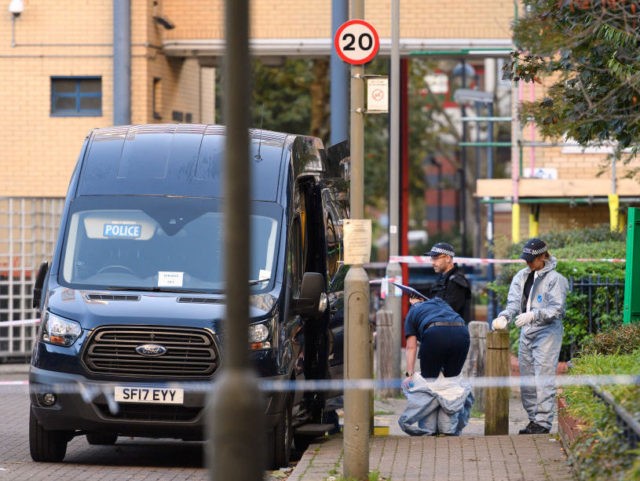Official crime figures have revealed a 14 percent jump in the number of homicides recorded in England and Wales, with knife offences hitting the highest level in eight years.
Office for National Statistics (ONS) crime data published Thursday recorded 739 murders over the past year, marking a rise of 90 killings from the 649 which took place in the previous 12 months.
Knives and other sharp objects were involved in around 40 percent of homicides — a rise of 10 percent from the previous year — as the number of knife crimes recorded rose 8 percent to 42,957 in total.
“This is the highest number since the year ending March 2011,” the ONS said, before noting that knife crime is disproportionately concentrated in London, with 35 percent of all crimes involving bladed instruments last year taking place in the capital.
After London, urban areas in West Yorkshire, Greater Manchester, and the West Midlands bore the brunt of “higher-harm” crime, with violent offences rising 19 percent from the previous year to total 1,545,544 in the 12 months to September 2018.
During this period, police also recorded a 16 percent increase in the number of rapes to 56,698, and sexual offences rose 14 percent to 158,162, but the ONS said the higher figures were “likely to reflect improvements by the police in how they record crime and in people being more willing to report a sexual offence”.
Helen Ross, of the ONS Centre for Crime and Justice, said: “In recent decades we’ve seen the overall level of crime falling, but in the last year, it remained level. There are variations within this overall figure, depending on the type of crime.
“Burglary, shoplifting and computer misuse are decreasing but others, such as vehicle offences and robbery are rising. We have also seen increases in some types of ‘lower-volume, high-harm’ violence including offences involving knives or sharp instruments.”
Chief Constable Bill Skelly, National Police Chiefs’ Council (NPCC) lead for Crime Recording and Statistics, commented to say that, while increased reporting could account for some of the rise in criminal offences, increases in violent crime were real and “had a devastating impact on victims and families.”
He said: “Rising crime, increased terrorist activity and fewer police officers have put serious strain on the policing we offer to the public.
“We are determining the additional capabilities and investment we need to drive down violence and catch more criminals – and we will make the case at the next government spending review. Equally important is driving up productivity and cutting any remaining inefficiencies.”
With no charges brought in more than 90 percent of recorded crimes, and polls showing a majority of the public think police have lost control over the streets, NPCC Chair Sara Thornton CBE slammed political pressure on officers to prioritise so-called hate crime.
Speaking last year, Ms Thornton called for a return to “core policing”, telling the NPCC’s annual conference, “I want us to solve more burglaries and bear down on violence before we make records of incidents that are not crimes.”
Her speech came a couple of months after it was revealed police forces in Britain had wasted thousands of hours in 2015/16 investigating 11,236 ‘hate incidents’ — acts too trivial to be classed as crimes — including complaints alleging a dog’s barking was “racist”.
Since the government launched its ‘hate crime action plan’ in 2016, which defines police driving up the number of complaints as a ‘success’, forces have been urged to proactively solicit ‘hate incident’ reports from the public, each one of which officers are required to record and investigate with a follow-up visit or phone call.

COMMENTS
Please let us know if you're having issues with commenting.